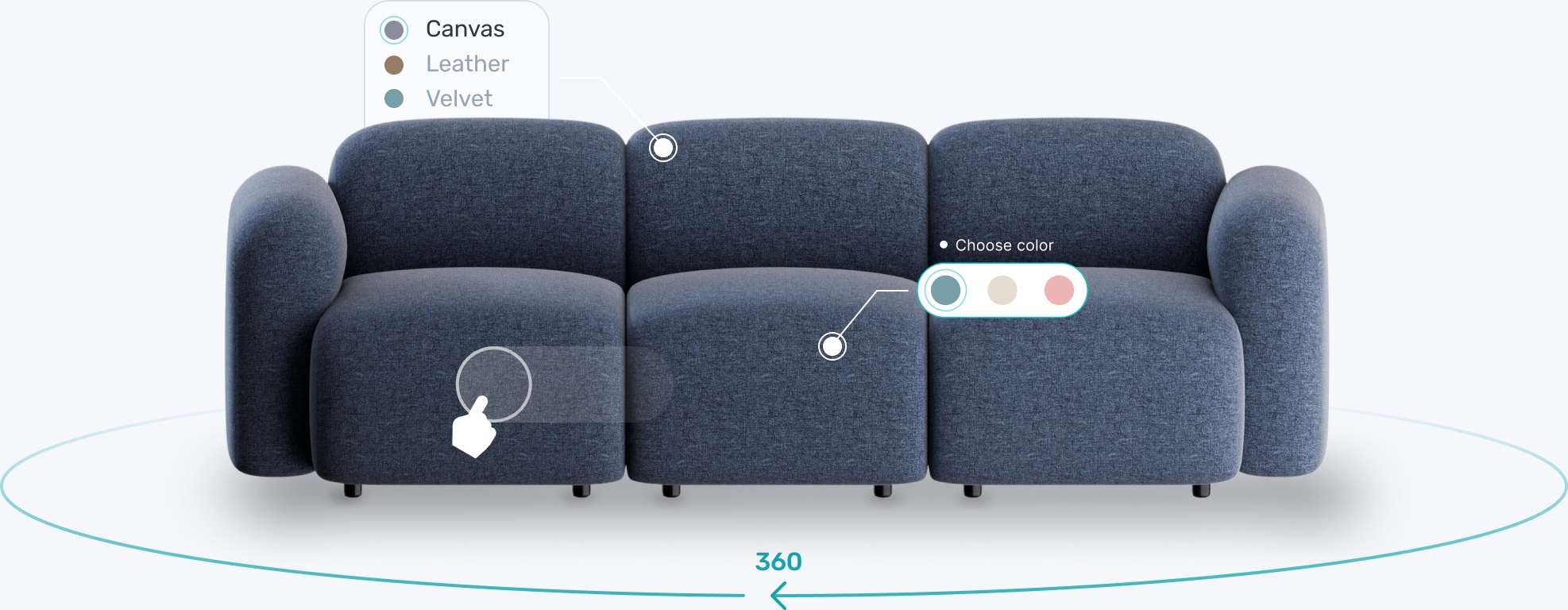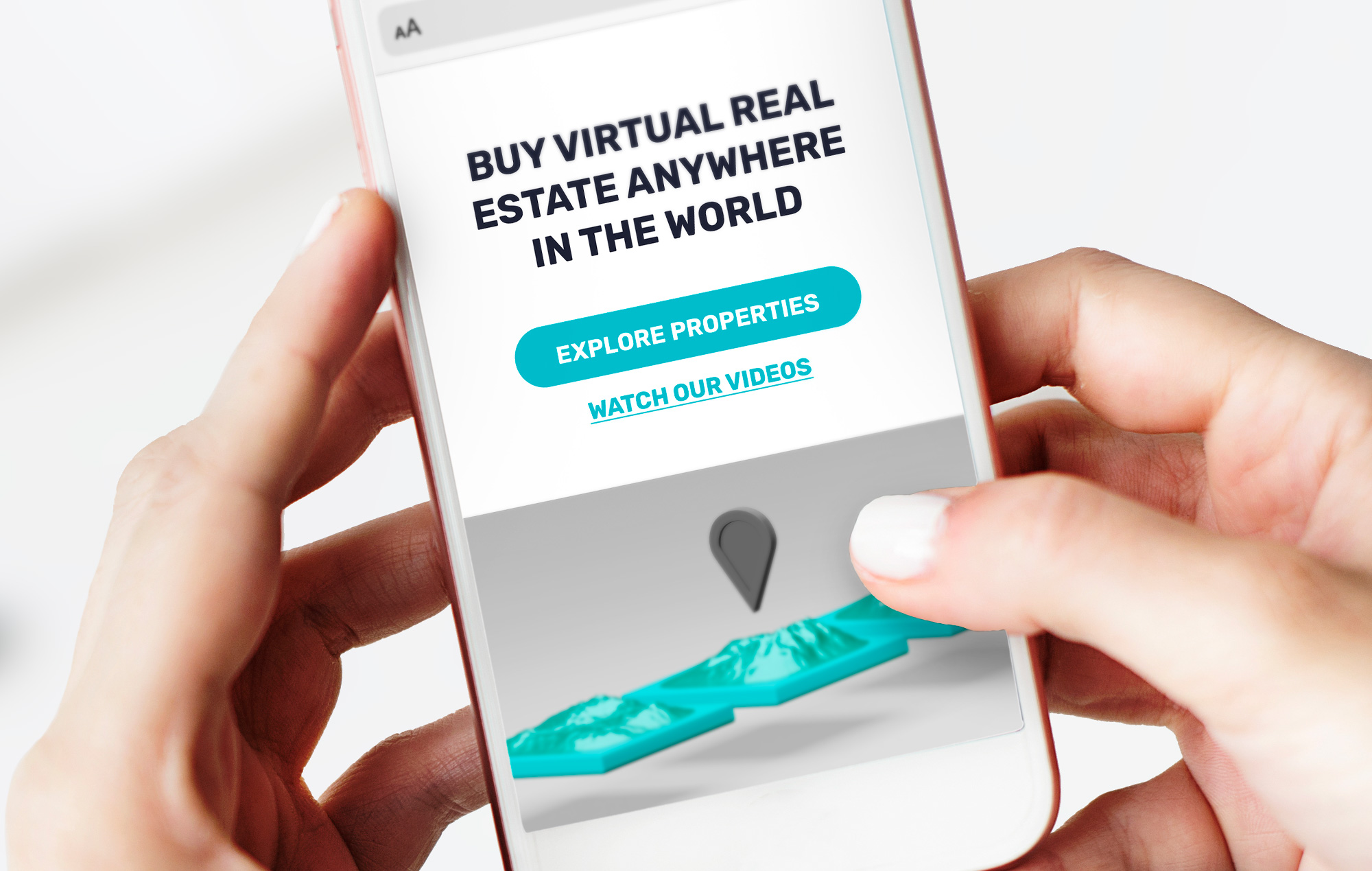Transform your eCommerce strategy with 3D & AR





Everyone’s talking about the metaverse, a series of virtual worlds, which will allow users to connect with others, play games, listen to music, and even buy products. It’s also becoming a major market for property investors. Could you join them? Let’s find out more.
The metaverse is a hot - but confusing - topic. In some circles, accepted metaverse examples include games like Minecraft and Roblox, as well as Decentraland and Sandbox. These virtual worlds can be accessed via standard laptops, as well as VR headsets and wearable glasses.
But the grand vision held by Meta-enthusiasts is for the creation of a single, unified metaverse that will combine these disconnected worlds into a seamless virtual experience. As we speak, these digital worlds are being developed, and that's where virtual real estate comes in.
Real estate in “the metaverse” has attracted plenty of news coverage. And the figures suggest an online "property boom." In 2021, the prices of virtual plots rose by a massive 500% after Facebook announced its rebranding as “Meta” and windfall profits seem to be everywhere.

In the real world, land is scarce, so property has inherent value. But if online land plots can be created with the press of a key, why do plots on these platforms change hands for huge amounts of money?
The answer is that privately-owned platforms decide how much digital space is available for users to buy. By rationing the availability of plots, they maintain their scarcity value. In theory, this should create a market for the most desirable plots as the community develops.
How does it work? Plots are divided into "square feet" and can be purchased via currencies developed by the platforms in question. For example, Decentraland users buy MANA tokens which can be purchased with most cryptocurrencies.
Anything bought with MANA comes in the form of Non Fungible Tokens (NFTs), including digital real estate. These blockchain-based tokens are registered to the owner's name and can't be copied. You can keep them in your wallet for as long as necessary, then sell them if the price is right.

There are two main reasons for the current boom in Metaverse property. As with real-world investments, they tend to relate to long-term growth prospects and short-term speculation.
In the long-term, if the Metaverse proves to be the next frontier in eCommerce, then companies will need a presence to sell their goods. Every business knows that where they need to be is where their customers are.
Already, we’re seeing some impressive retail developments. Fashion label Ralph Lauren is reportedly making millions every week selling digital apparel to clothe avatars. Nike has purchased a “virtual sneaker company”, and Gucci has even sold a virtual bag on Roblox for the digital currency equivalent of $4,000.
There’s clearly a serious appetite for digital fashion. And as the market matures, brands will need to find digital real estate that's close to popular spots where they can capture traffic and promote their products.
Those locations will only grow in value, making them desirable real estate investments – if you can spot them. As Tokens.com CEO Andrew Kiguel told the New York Times, investing is all about location. “A parcel of land in the downtown core, which has a lot of visitor traffic, is worth more than a parcel of land in the suburbs.”
On the other hand, some see Metaverse real estate as a short-term opportunity to sell residential plots to digital homesteaders or to flip them in the same way that real-world investors realize rapid market gains.
Brokers are looking at how much users will pay for real estate close to commercial or entertainment venues, or the homes of celebrity residents. The plot next to rapper Snoop Dogg’s digital home on the Sandbox platform recently sold for $450,000, so speculative opportunities definitely exist. And as visitor numbers swell, it's likely that more conventional rental investors will materialize as well.
As in the real world, digital property investments can be used in different ways, and there are plenty of creative ideas about how to realize a profit. For instance, recent investments include:
At this stage, the vast majority of “metaverse” land investments are highly speculative, while the virtual land boom is also relatively small. The numbers seem large at first glance, but not when compared to the market in cryptocurrencies (around $1.5 billion) or physical real estate ($326 trillion).
This is still a “Wild West” situation where nobody really knows what the future holds, or how to exploit emerging technology – something that’s important to bear in mind when making virtual land investments.

With real estate prices soaring across various platforms, buying land online is increasingly tempting. But with various NFT-related assets available, not to mention cryptocurrencies, is buying a Sandbox plot really the best use of your capital? As usual, there are pros and cons to consider:
The Metaverse offers an exciting new venue for bold and innovative investors and the potential user base is massive. As the market develops, the most successful investors will be those who use virtual reality technology to attract attention in the digital world. If companies can stand out by creating unmissable digital assets, they can realize returns on their virtual real estate investments.
The question creative companies now need to ask is: how can I craft experiences which build on my digital property investments and make them meaningful? At CGTrader, we have a few suggestions.
Environments in the virtual world are as rich as the items they contain. And creating rich environments means populating them with items that are beautiful to look at, and in demand by platform users. Empty spaces won’t excite anyone, and poor-quality digital items will be discarded as the technology develops.
If you want to stay ahead of the pack when creating a presence on Metaverse platforms, it’s vital to use high-quality 3D modeling tools. Modelry can generate thousands of 3D versions of real-world products that are ready to use or even sell as NFTs.
Customers will want to decorate their homes with curtains, artworks, ornaments, cushions – and many other add-ons. We’ve seen that there’s a huge demand for clothes and accessories like watches and jewelry. Vehicles will likely be another growth area, along with everything from pets to plants.
Take your first steps to combine digital real estate with 3D modeling. With our help, start building incredible experiences and locations on your favorite platform and capitalize on the wave of the future.




